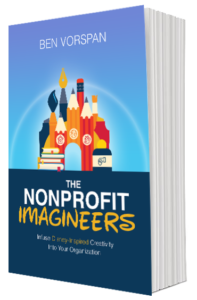
As the High Holy Days quickly approach, synagogues have a unique opportunity to engage millennials—the largest living generation and a key demographic for the future of Jewish communities. Millennials are looking for meaningful, authentic experiences, and synagogues that can tap into these values will not only boost attendance but foster deeper, long-term engagement.
Here are ten creative, easy-to-implement ideas to make your synagogue’s services more inviting for millennials:
1. Outdoor, Nature-Based Services
Host part of the service outdoors, in a nearby park or synagogue garden. Being in nature offers a powerful spiritual experience for many millennials who value mindfulness and environmental awareness. Integrating the beauty of the natural world with sacred prayer can make the service feel fresh and connected to their daily lives.
Benefit: Offers a change of environment and aligns with millennial values of sustainability and mindfulness.
2. Create a Personal Welcome Ritual
As millennials arrive, greet them individually with a small, meaningful object like a pebble or leaf, encouraging them to place it in a communal bowl or on a shared altar. This symbolizes coming together as a community while making them feel personally connected to the service.
Benefit: Builds a sense of belonging and connection from the moment they walk in.
3. Community Storytelling Moment
During services, set aside 10-15 minutes for an “open mic” storytelling session. Invite millennials (and other congregants) to share a personal story or reflection related to the themes of the High Holy Days—whether it’s about forgiveness, renewal, or growth. This creates a raw, authentic moment of shared experience that resonates with millennial values of vulnerability and authenticity.
Benefit: Engages millennials in storytelling and makes the service more interactive.
4. Sacred Circle Seating
Arrange the seating in a circle (or semi-circle) instead of the traditional rows. This subtle shift in space makes the service feel more intimate and egalitarian, helping millennials feel more like participants rather than passive observers.
Benefit: Fosters inclusivity and community, which millennials crave in spiritual settings.
5. Interactive Soundscapes
Rather than relying only on a cantor or choir, involve the congregation in creating the sounds of the service. Invite millennials to help lead group chants, drumming, or other rhythmic activities. Simple instruments like shakers or hand drums can be passed around to create a communal soundscape, enhancing engagement and energy.
Benefit: Makes the service more participatory and experiential.
6. Pop-Up Reflection Stations
Create small “reflection stations” scattered throughout the synagogue, offering spaces for quiet meditation or guided, audio-free prompts that encourage deep thought. One station might include visuals, like symbolic objects or art installations, related to themes of the holidays. These quiet, introspective spaces provide opportunities for personal connection without the need for words.
Benefit: Appeals to the millennial love for introspection and mindfulness, offering a private yet meaningful experience.
7. Collaborative Blessing
Towards the end of the service, invite the congregation to collectively recite a community blessing or intention, with different parts of the congregation taking turns. Millennials can lead this effort, making it a shared, inclusive moment that reflects the group’s hopes for the new year.
Benefit: Fosters a sense of unity and collaboration, making the experience more communal.
8. Symbolic Movement
Introduce simple movements into the service. For instance, as a symbolic action during the Amidah or another prayer, everyone could stand and face different directions to represent change and reflection. Movement, when aligned with prayer, adds an embodied layer to the spiritual experience.
Benefit: Appeals to millennials’ desire for holistic and embodied spiritual practices.
9. Mitzvah Swap
Instead of a traditional tzedakah appeal, consider a “mitzvah swap” before or after services. Set up a board where people can post small, tangible acts of kindness they’ve done in the last year, or one they pledge to do. No writing on the holiday itself is required, but you can ask participants to verbally share their stories after services. It creates a positive, feel-good atmosphere that encourages them to keep thinking about acts of service long after the holidays end.
Benefit: Adds a meaningful, action-based twist to tzedakah and helps millennials see the direct impact of their values.
10. Break-The-Fast Connections
Organize an informal “break-the-fast” potluck after Yom Kippur, where millennials can join with others in the community. Invite attendees to bring a dish that has a personal or family story behind it, and encourage people to share those stories as they eat. Food is a powerful way to build connection and nostalgia, and sharing it in this way fosters a deeper sense of community.
Benefit: Combines two millennial favorites: storytelling and food, while deepening relationships within the community.
Why Focus on Millennials?
Millennials, now the largest living generation, are a key demographic for building the future of Jewish communities. They bring fresh perspectives, prioritize authenticity, and seek meaningful, engaging experiences that connect them deeply to their values. For synagogues, making High Holy Day services more appealing to millennials isn’t just about boosting attendance—it’s about laying the groundwork for long-term, intergenerational engagement and leadership.
The Benefits of Engaging Millennials
- Strengthening Community: Millennials often serve as connectors, bridging older and younger generations within the synagogue. By appealing to their interests and values, you foster a more cohesive and vibrant community.
- Long-Term Engagement: Once millennials feel a sense of belonging and purpose in your synagogue, they are more likely to become consistent members, volunteers, and future leaders.
- Building Tradition in Modern Times: Creating a welcoming space for millennials ensures that Jewish traditions continue to thrive in modern, meaningful ways, preserving the heritage while adapting to contemporary needs.
By thinking creatively and incorporating these simple, yet engaging ideas, your synagogue can make the High Holy Days an inviting and meaningful experience for millennials, strengthening their connection to Judaism and the community for years to come.
 Celebrate 2 years of Imagineering!
Celebrate 2 years of Imagineering!
Comments are closed